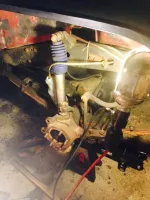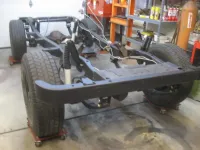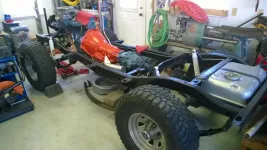Shocks - Up or Down?
Peanut Butter
Full Time Jeeper
- Posts
- 2,591
- Media
- 37
- Resources
- 1
- Thanks
- 15
- Location
- Boerne, Texas
- Vehicle(s)
- 1979 Jeep CJ7 TH400 Automatic 258 I6 Quadratrac Amc 20 rear & Dana 30 front, 32 x 11.5 x 15 tires. Currently a Complete Custom Rebuild in progress.
Also I own a 2001 Jeep Cherokee, White, all stock with 4.0L. automatic, and police package. Best part of that is it came with leather seats! This package also has the NP242 Transfer Case, 8.25 rear end, and trailer towing package.
After following several different build threads  , I have noticed that everybody installs their shocks a different way.
, I have noticed that everybody installs their shocks a different way.  Some install the boot portion or rod portion down, and other install it up. What way do you install yours, and why?
Some install the boot portion or rod portion down, and other install it up. What way do you install yours, and why?
Here are a couple of examples of boot portion up, and the last picture is mine with boot portion down:


And mine:

Thanks Pete and Certifiable for the picture examples. Rod
Here are a couple of examples of boot portion up, and the last picture is mine with boot portion down:


And mine:

Thanks Pete and Certifiable for the picture examples. Rod


 that came with the lift kit. But new is way better than the wore out junk that was on there. Maybe next time around, I'll invest in some decent ones. Rod
that came with the lift kit. But new is way better than the wore out junk that was on there. Maybe next time around, I'll invest in some decent ones. Rod If the boot is holding sand and water then modify the boot or take the time to clean it out once in awhile. Protecting the smooth machined surface of the shaft in other than normal driving conditions would be a benefit.
If the boot is holding sand and water then modify the boot or take the time to clean it out once in awhile. Protecting the smooth machined surface of the shaft in other than normal driving conditions would be a benefit.
 Rod
Rod
